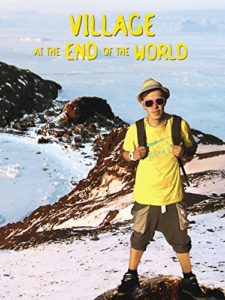HNC Photography, IFC - Coursework, Introduction to Film Culture Blog, Movies watched, Project 3 - Ways of seeing, Research & Reflection IFC
 Village at the End of the World (2012)
Village at the End of the World (2012)
Director: Sarah Gavron, David Katznelson
Summary: Village At The End Of The World is a witty, surprising and ultimately feel good portrait of an isolated village of 59 people and 100 sledge dogs, surviving against the odds.. (IMDb)
Synopsis: Shot over the course of a year in Northern Greenland, the film intrudes audiences to a remote village with more dogs than people. The film focuses on four townsfolk from the tiny population of 59 – Lars, the only teenager; Karl, the huntsman who has never acknowledged that Lars is his son; Ilanngauq, the outsider who moved to Niaqornat after meeting his wife on-line; and Annie, the elder who remembers the ways of the Shaman and a time when the lights were fueled by seal blubber. In this astutely constructed real-life drama, we see how the economic and ecological future of the community is more fragile than its hardy inhabitants. (IMDb)
Review:
Like the other 2 films watched in this section, this is an attempt by the filmmakers to show us life as it is in somewhere we have not seen before and director Sarah Gavron put this forward in a very modern way.
While the village its self is visually breathtaking the film focus’s on a few of the villagers and show how life for them there is becoming increasingly difficult following the closure of the fish processing factory. The film concentrates on the globalisation focus on how the villagers need not only the fish plant to survive but, Facebook, Premiership football, cruise ship passengers, hip hop and internet dating.
The villages only teenager gives the film a dark view at times, as you can relate to his complete loneliness, his only family is his Grandmother, he treats his mother as a sister (at best) and he his father has never acknowledged he is his father. He dreams of friends and education and adventure – up this must be hard when you are one of 8 in a classroom where you peers are often 10 years younger than you.
This film its self is presented differently to “Nanook of the North” and “The Last Trapper” as there is no feeling of the contrived story just honest interaction between the villages and the film crew. The villagers seem at ease with the camera and react naturally the question posed by the team to provide detail of the life in the village.
